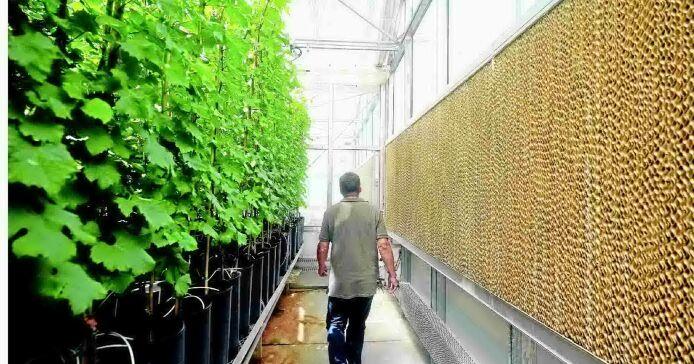Shamim Ahamed and Purvi Tiwari, who conducted separate Ph.D. research inside greenhouses on opposite sides of the world, were inspired to study the heat in these indoor structures after experiencing uncomfortable conditions.
Tiwari, a researcher at Indira Gandhi Agricultural University in India, observed the heat-amplifying effects of greenhouses, which caused her to experience leg cramps, nausea, and dizziness, symptoms later reported by the farmers she studied.
In India, where summer outdoor temperatures can reach 120 degrees Fahrenheit, greenhouse workers often feel suffocated inside. The trend of greenhouses has grown in the past five years due to shrinking available land amid development.
“Workplaces shouldn’t harm humans,” Tiwari emphasized.
People are also reading…
The number of greenhouse and nursery workers in the U.S. has increased by 16,000 in recent years, but there are no federal heat rules in place.
There is limited research on the experiences of greenhouse workers and their working conditions, as well as how to protect them in hot and humid environments. However, academics like Tiwari and Ahamed are working to fill these knowledge gaps.
Bharat Jayram Venkat, associate professor and director of UCLA’s Heat Lab, highlighted the lack of research specifically focused on greenhouse workers despite significant research on agricultural workers in general.
The literature on greenhouses usually emphasizes maximizing plant growth and production, overlooking the importance of human health in these environments.
The U.S. Department of Agriculture reported an increase in the number of farms, square feet under glass, and greenhouse sales value in 2017. The use of the H-2A agricultural workers program doubled from 2010 to 2019.
As indoor, climate-controlled growing environments become more popular, particularly in extreme climatic conditions, more research is expected to emerge. Recent laws, like California’s indoor heat rules, and the rise in greenhouse workers will also drive interest in studying their working conditions.
Jennifer Vanos, an associate professor at Arizona State University, has researched the impact of extreme heat on the productivity of agricultural workers. Their findings suggest that as temperatures rise, workers become less productive, leading to economic implications.
Heat stress symptoms include heavy sweating, cramps, and fast heart rate, with exposure to extreme temperatures increasing the risk of injuries and heat stroke. Humidity exacerbates heat-related risks by inhibiting sweat evaporation.
Ahamed, now an assistant professor at UC Davis, studied the risks of heat exposure in high-tech greenhouses and the effectiveness of cooling tools like shade “skins.” Tiwari’s research in India also revealed the increased heart rate of greenhouse workers compared to those working in open fields.
Addressing the lack of research on greenhouse workers, particularly in the U.S., is crucial for implementing regulations and safety procedures to protect their health and well-being.





